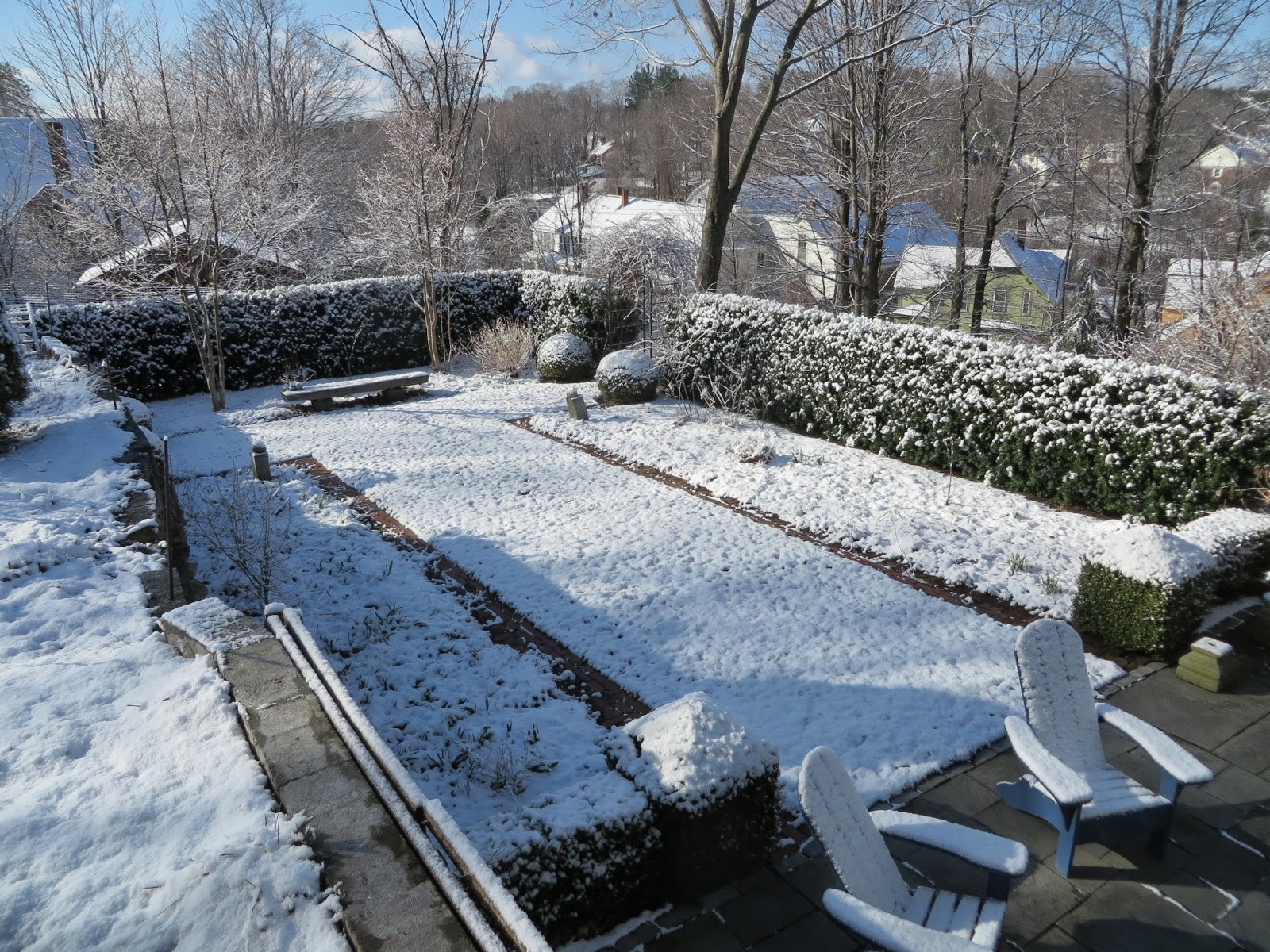The Boccelli Garden is mixed border that is now about 14 years old. It contains a mixture of shrubs, small trees, perennials, biennials, annuals and bulbs. The garden is modeled after the planting style used in many English gardens and in particular the succession planting style used by the late Christopher Lloyd, and continued with great finesse by Fergus Garrett, at Great Dixter. The idea is to have the maximum effect for as long of a season as possible.
The blue spruce in the foreground at the Boccelli garden is a dwarf cultivar called Picea pungens 'Glauca Globosa'. It was planted in 2001 and has been a wonderful textural, as well as color, component to the garden, but after a decade it has grown too large, is out of scale with the planting and is occupying too much space.
While I was cleaning out the garden this week, I realized how much valuable real estate the blue spruce had taken over and how the surrounding perennials were being crowded out of existence. I also remembered last spring that opportunities to add annuals along the edge of the garden in front of the spruce had slowly vanished over the years.
I walked around the garden as I did my spring duties in the border. I imagined the garden without the spruce or with the spruce replaced with "another youngster" from every angle. Slowly, it became clear to me that this was the year to take action. I started with a few shallow cuts with my hand saw to the trunk and then I got up, reassessed the situation, gathered some courage, laid down in the garden once more and did the deed.
Another shot of the before picture.
It is always shocking when a big change happens in the garden but what I see are the opportunities.


































